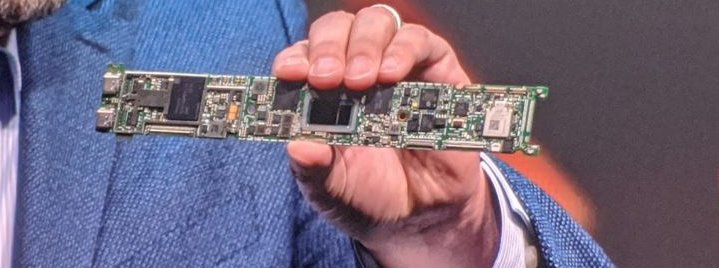Put a Tiger in your Lake: Intel’s next-gen mobile CPUs pack a punch

Enlarge / The slightly darker black blob in the center of this board is a Tiger Lake mobile CPU. (credit: Jim Salter)
Yesterday at CES 2020, Intel previewed its next-generation line of mobile CPUs, code-named Tiger Lake, in several new form factors while running brand-new (and impressive) software designed with the platform in mind.

This red ultralight is one of the new Project Athena compliant Chromebook models announced at CES 2020. (credit: Jim Salter)
Tiger Lake plays into Intel's ongoing Project Athena program, which aims to bring a performance and usability standard with concrete, testable metrics to mobile computing-that includes at least nine hours of battery life with the screen at 250 nits of brightness, out-of-the-box display and system settings, and multiple tabs and applications running. Project Athena has now been expanded to cover some new Chromebook models, as well as traditional Windows PCs.
Several new foldable designs were announced during the presentation, ranging from a relatively conventional Dell hinged two-in-one to much more outri(C) designs such as Lenovo's X1 Fold-presented onstage by Lenovo President Christian Teismann-and an Intel concept design prototype called Horseshoe Bend. Both the X1 Fold and Horseshoe Bend will look immediately familiar to anyone who has been following Ron Amadeo's coverage of the Samsung and Motorola foldable smartphones; in each design, the screen itself folds down the middle.
Read 5 remaining paragraphs | Comments